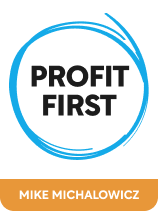

This article is an excerpt from the Shortform book guide to "Profit First" by Mike Michalowicz. Shortform has the world's best summaries and analyses of books you should be reading.
Like this article? Sign up for a free trial here .
What is the Profit First system? How can implementing the Profit First accounting system help you improve your business’s bottom line?
The Profit First system is entrepreneur Mike Michalowicz’s solution to replace traditional business accounting. Implemented properly, the Profit First system should lead your business to long-term success. However, Michalowicz notes that there are some common misunderstandings entrepreneurs have about the system, which can lead to mistakes in financial decision-making.
In this article, we’ll explain the three most common mistakes entrepreneurs make when using the Profit First system, the misunderstandings that cause them, and ways you can avoid making these mistakes yourself.
Mistake #1: Reducing Quality
The mistake: Cutting costs by reducing the quality of products or services. Doing so harms your business’s ability to make customers happy, which is one of an entrepreneur’s top priorities. This can occur when an entrepreneur misunderstands the Profit First system’s emphasis on cost-cutting, and focuses on short-term savings over long-term efficiency.
While reducing the quality of your products or services saves money in the short term, it will ultimately harm you later on. Instead, cut expenses by finding ways to produce and deliver your products and services more efficiently, even if it might require a short-term expense.
- For example, a large expense on high-quality materials or equipment might save you more money in the long run when compared to cheaper but worse or less efficient alternatives, since your clients will be more satisfied and as a result more likely to buy from you again.
| How Customers Perceive Quality Michalowicz’s argument that reductions in quality will decrease customer satisfaction seems like common sense. However, research indicates that the relationship between product quality and perceived quality isn’t as simple as you might think. Depending on the product, there can be a significant lag between when quality decreases and when consumers actually notice it decrease. This gap can be anywhere between a year to a decade, so keep in mind that your quality decreases or increases could take a long time to be reflected in customer satisfaction. There are also studies that suggest that consumers’ perception of quality is influenced by far more than the product itself. For example, one study indicates that consumers assume higher priced products are higher quality, even when that might not be the case. Because of the influence things like price have on perceived quality, it’s possible that a decrease in your product quality could be “covered up” by other factors, or that an increase in quality might not be noticed because of another factor like price. |
Mistake #2: Not Adjusting Taxes
The mistake: Using previous tax estimates to determine money needed for this year’s taxes. This will often lead to not having enough money to pay taxes. This mistake occurs when an entrepreneur using the Profit First system doesn’t recognize that as they increase their profit allocation percentage, they will have more taxable income and their taxes will increase.
To avoid this mistake, recalculate your tax liability every quarter, so that your estimates will accurately represent your newly increased profits and you can plan to allocate an appropriate amount of money to paying your taxes.
| Keeping Profits High and Taxes Low Michalowicz acknowledges that because his system will increase your profits, it will also increase the amount of taxes you’ll have to pay. However, there are a number of ways you can minimize your taxes, despite having more profits than before. There are three common methods for doing so: 1. Long-term capital gains: Long-term capital gains are defined as money made from selling any asset you’ve held for more than a year, and can include things like bonds, real estate, or cars. The United States taxes long-term capital gains at a flat rate, rather than at the rate appropriate for your overall income. 2. Appropriate expense deductions: As an entrepreneur, there are also a number of expenses you can classify as part of your business, making them tax-free. Examples of this include equipment for your home office, or even a portion of your home internet bill if you use the internet for business purposes. It also can include travel costs, business lunches, or even dry-cleaning bills on clothing you wear to client meetings. 3. Hiring a family member: In some circumstances, hiring a family member can reduce your tax liability on the money you pay them. Different taxes may or may not apply to certain family members, so be sure to consult an accountant or the IRS website. |
Mistake #3: Planning for High Income
The mistake: Increasing expenses or salary based on the income of an above-average month. Because the Profit First system is percentage-based, the amount of money going into your accounts will fluctuate as your income does. However, increasing your costs or salary in response to an above-average month will often leave you stuck with additional costs you can’t pay for when you hit a couple of low-income months.
To avoid this mistake, Michalowicz advises that you plan for below-average income months when calculating your expenses and salary. He recommends three methods for managing your accounting that allow you to do so.
- Michalowicz dictates that if you are having a good month in terms of income and find yourself with more money than you need in your salary account, leave that money alone. You’ll need it during slower months to keep your salary consistent despite receiving less income.
- Use the average income of your three slowest months from the last year as a reference when determining your salary and expense percentages. This way you’re planning for slow months before they happen, so you’ll be ready when they come and won’t have to scramble to figure out how to pay your own salary.
- If you consistently have too much money in your expense or salary account each month, then you can lower their percentages when doing your quarterly allocation percentage adjustments.
| Stay Optimistic, Stay Realistic Michalowicz acknowledges that by planning for low-income months, you might have to temporarily suppress your entrepreneurial optimism and be pessimistic about your future. However, what he recommends can be seen as a form of optimism—specifically, what social psychologist Heidi Grant calls “realistic optimism.” Realistic optimism means thinking that you’ll succeed or things will go well, but recognizing that you’ll need to work hard to make that happen. This is in contrast to unrealistic optimism, which is the belief that you will succeed and have an easy time doing so—a belief that research suggests often correlates with failure. Michalowicz’s guidelines in this section allow you to be realistically optimistic: By keeping leftover money in your salary account and basing your percentages on your low-income months, you’re being realistic by acknowledging that times might get tough at some points. However, by recommending you adjust your allocation percentages when your average income increases, Michalowicz is also recommending you stay optimistic. After all, this guideline involves making a plan for a future where your business finds more success. |

———End of Preview———
Like what you just read? Read the rest of the world's best book summary and analysis of Mike Michalowicz's "Profit First" at Shortform .
Here's what you'll find in our full Profit First summary :
- Why traditional business accounting methods don't work
- How to use the Profit First method to increase your business’s profitability and stability
- How to assess your business's current financial health






